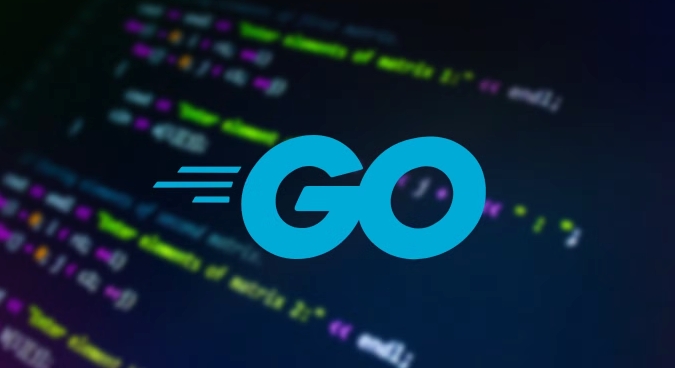How to get code coverage for golang tests
Use the go test built-in command to generate coverage data: run go test -cover ./... to display the coverage percentage of each package, or use go test -coverprofile=coverage.out ./... to generate a detailed report and view the specific uncovered lines of code through go tool cover -html=coverage.out -o coverage.html. Integrate coverage report in CI: Create a coverage.out file and upload it through third-party tools such as codecov or coveralls, for example, upload it using the curl --data-binary @coverage.out https://codecov.io command. Multiple packages merge statistical coverage: generate .out files for each package separately, use go tool cover -mode=count -var=ModeSet -o merged.out to merge the results, and finally generate a unified report through go tool cover -html=merged.out -o combined_coverage.html.

When running unit testing for Go language, if you want to know code coverage, the official toolchain has provided a very convenient way. In the version of Go 1.20, the method of obtaining test coverage is more unified and simple. Let me tell you some practical methods.

Use go test built-in command to generate coverage data
Go's own go test command supports direct output of coverage information. You just need to add the -cover parameter when running the test.

go test -cover ./...
This displays the percentage coverage for each package. If you want to see more details about which functions or statements are not covered, you can generate an HTML report:
go test -coverprofile=coverage.out ./... go tool cover -html=coverage.out -o coverage.html
Then open coverage.html with your browser and you can see which line is covered and which line has not been covered.

Tip: If you only care about the coverage of a certain package, you can directly locate it in that directory and execute the command.
Integrate coverage report in CI
Many continuous integration systems (such as GitHub Actions, GitLab CI) support uploading coverage reports. You can first generate the coverage.out file as above, and then upload it using third-party tools such as codecov or coveralls .
The basic process is as follows:
- Install the corresponding service CLI tool
- Generate coverage file
- Upload report
Take codecov as an example:
go test -coverprofile=coverage.out ./... curl --data-binary @coverage.out https://codecov.io
The specific commands of different platforms are slightly different, but the overall idea is the same: Generate report -> Extract data -> Upload analysis .
Multiple packages merge statistical coverage
If you have multiple subpackages and want to aggregate their coverage into a total report, you need to go through step by step:
- First generate
.outfiles for each package - Then use
-coverprofileand-cover.modeto merge all results - Finally, use
go tool coverto output HTML
For example:
go test -cover -coverprofile=coverage1.out ./pkg1 go test -cover -coverprofile=coverage2.out ./pkg2 go tool cover -mode=count -var=ModeSet -o merged.out coverage1.out coverage2.out go tool cover -html=merged.out -o combined_coverage.html
This allows you to obtain a unified coverage report covering multiple modules.
Basically these methods. Although the operation steps seem a bit too many, just by familiarizing yourself with the commands, it will actually run very quickly every time, and it can help you better evaluate the quality of the test.
The above is the detailed content of How to get code coverage for golang tests. For more information, please follow other related articles on the PHP Chinese website!

Hot AI Tools

Undress AI Tool
Undress images for free

Undresser.AI Undress
AI-powered app for creating realistic nude photos

AI Clothes Remover
Online AI tool for removing clothes from photos.

Clothoff.io
AI clothes remover

Video Face Swap
Swap faces in any video effortlessly with our completely free AI face swap tool!

Hot Article

Hot Tools

Notepad++7.3.1
Easy-to-use and free code editor

SublimeText3 Chinese version
Chinese version, very easy to use

Zend Studio 13.0.1
Powerful PHP integrated development environment

Dreamweaver CS6
Visual web development tools

SublimeText3 Mac version
God-level code editing software (SublimeText3)
 How to build a web server in Go
Jul 15, 2025 am 03:05 AM
How to build a web server in Go
Jul 15, 2025 am 03:05 AM
It is not difficult to build a web server written in Go. The core lies in using the net/http package to implement basic services. 1. Use net/http to start the simplest server: register processing functions and listen to ports through a few lines of code; 2. Routing management: Use ServeMux to organize multiple interface paths for easy structured management; 3. Common practices: group routing by functional modules, and use third-party libraries to support complex matching; 4. Static file service: provide HTML, CSS and JS files through http.FileServer; 5. Performance and security: enable HTTPS, limit the size of the request body, and set timeout to improve security and performance. After mastering these key points, it will be easier to expand functionality.
 Go for Audio/Video Processing
Jul 20, 2025 am 04:14 AM
Go for Audio/Video Processing
Jul 20, 2025 am 04:14 AM
The core of audio and video processing lies in understanding the basic process and optimization methods. 1. The basic process includes acquisition, encoding, transmission, decoding and playback, and each link has technical difficulties; 2. Common problems such as audio and video aberration, lag delay, sound noise, blurred picture, etc. can be solved through synchronous adjustment, coding optimization, noise reduction module, parameter adjustment, etc.; 3. It is recommended to use FFmpeg, OpenCV, WebRTC, GStreamer and other tools to achieve functions; 4. In terms of performance management, we should pay attention to hardware acceleration, reasonable setting of resolution frame rates, control concurrency and memory leakage problems. Mastering these key points will help improve development efficiency and user experience.
 Go select with default case
Jul 14, 2025 am 02:54 AM
Go select with default case
Jul 14, 2025 am 02:54 AM
The purpose of select plus default is to allow select to perform default behavior when no other branches are ready to avoid program blocking. 1. When receiving data from the channel without blocking, if the channel is empty, it will directly enter the default branch; 2. In combination with time. After or ticker, try to send data regularly. If the channel is full, it will not block and skip; 3. Prevent deadlocks, avoid program stuck when uncertain whether the channel is closed; when using it, please note that the default branch will be executed immediately and cannot be abused, and default and case are mutually exclusive and will not be executed at the same time.
 Developing Kubernetes Operators in Go
Jul 25, 2025 am 02:38 AM
Developing Kubernetes Operators in Go
Jul 25, 2025 am 02:38 AM
The most efficient way to write a KubernetesOperator is to use Go to combine Kubebuilder and controller-runtime. 1. Understand the Operator pattern: define custom resources through CRD, write a controller to listen for resource changes and perform reconciliation loops to maintain the expected state. 2. Use Kubebuilder to initialize the project and create APIs to automatically generate CRDs, controllers and configuration files. 3. Define the Spec and Status structure of CRD in api/v1/myapp_types.go, and run makemanifests to generate CRDYAML. 4. Reconcil in the controller
 Go REST API example
Jul 14, 2025 am 03:01 AM
Go REST API example
Jul 14, 2025 am 03:01 AM
How to quickly implement a RESTAPI example written in Go? The answer is to use the net/http standard library, which can be completed in accordance with the following three steps: 1. Set up the project structure and initialize the module; 2. Define the data structure and processing functions, including obtaining all data, obtaining single data based on the ID, and creating new data; 3. Register the route in the main function and start the server. The entire process does not require a third-party library. The basic RESTAPI function can be realized through the standard library and can be tested through the browser or Postman.
 How to get code coverage for golang tests
Jul 12, 2025 am 02:58 AM
How to get code coverage for golang tests
Jul 12, 2025 am 02:58 AM
Use the getest built-in command to generate coverage data: run getest-cover./... to display the coverage percentage of each package, or use getest-coverprofile=coverage.out./... to generate a detailed report and view the specific uncovered lines of code through gotoolcover-html=coverage.out-ocoverage.html. Integrate coverage report in CI: create a coverage.out file, and upload analysis through third-party tools such as codecov or coveralls, for example, using curl--data-binary@coverage.o
 How to set up golangci-lint for a project
Jul 12, 2025 am 03:06 AM
How to set up golangci-lint for a project
Jul 12, 2025 am 03:06 AM
The installation steps of golangci-lint are: 1. Install using binary installation or Goinstall command; 2. Verify whether the installation is successful; the configuration methods include: 3. Create a .golangci.yml file to enable/disable linters, set an exclusion path, etc.; the integration methods are: 4. Add lint steps in CI/CD (such as GitHubActions) to ensure that lint checks are automatically run for each submission and PR.
 How to avoid heap allocations in a performance-critical golang function
Jul 13, 2025 am 03:06 AM
How to avoid heap allocations in a performance-critical golang function
Jul 13, 2025 am 03:06 AM
To reduce the heap allocation of critical path functions in Go, four methods can be taken: 1. Use stack variables to avoid escape; 2. Pre-allocate and reuse objects; 3. Avoid implicit escape writing; 4. Use tools to verify escape. Specifically, it includes avoiding returning local variable pointers, using value types to reduce escape, pre-allocate slice capacity, using sync.Pool to cache objects, avoiding closures to capture large structures, not assign interface types, and checking escape points through -gcflags=-m, thereby reducing GC pressure and improving performance.







